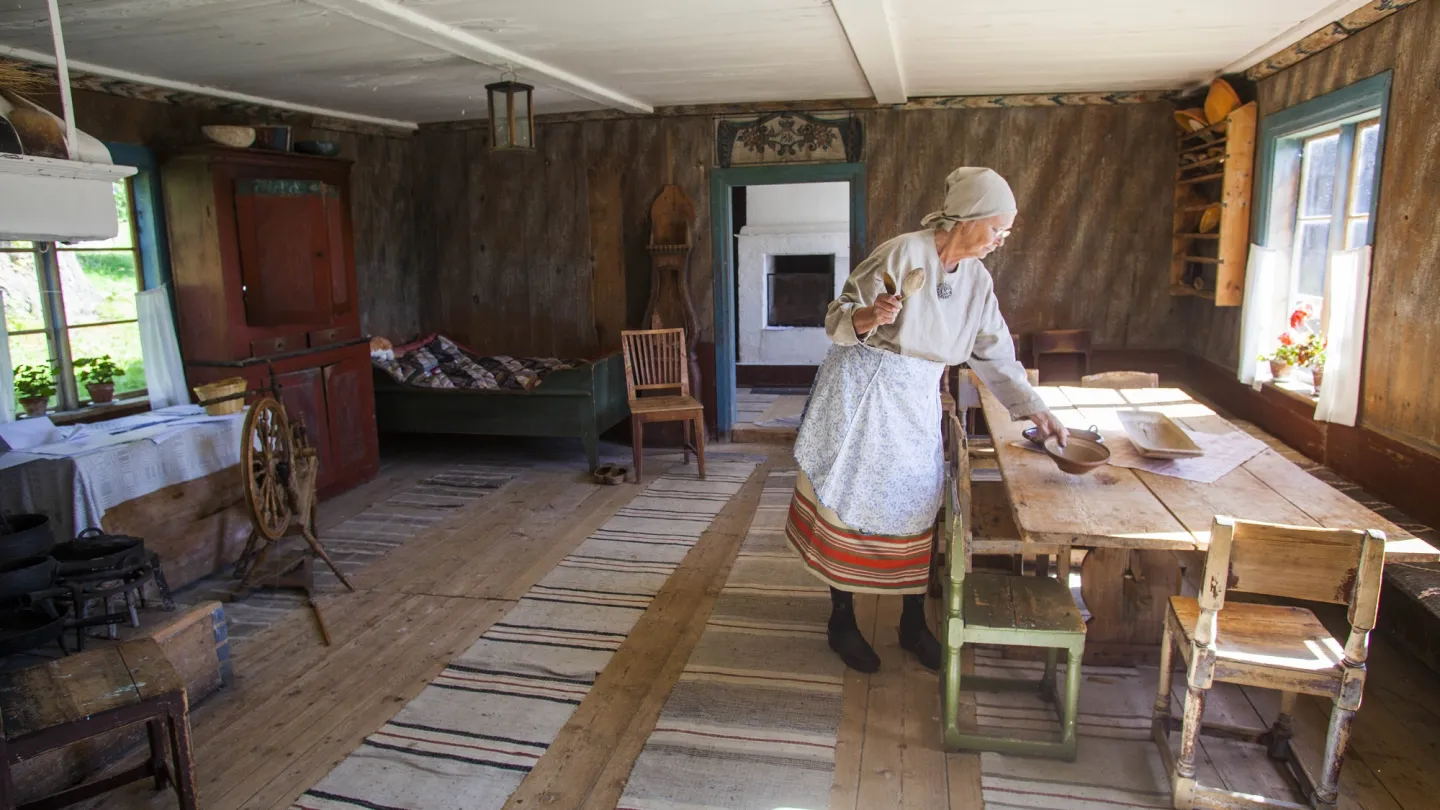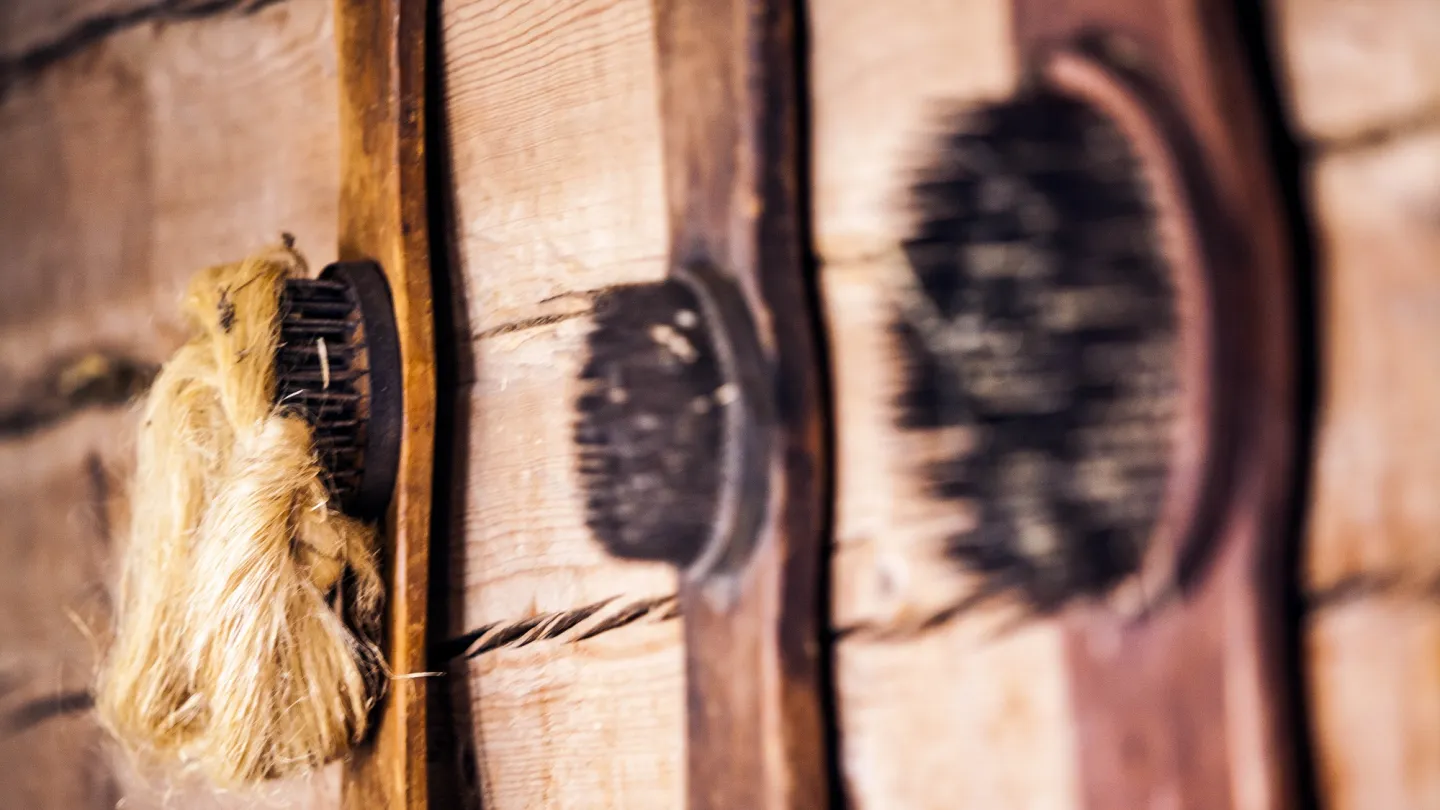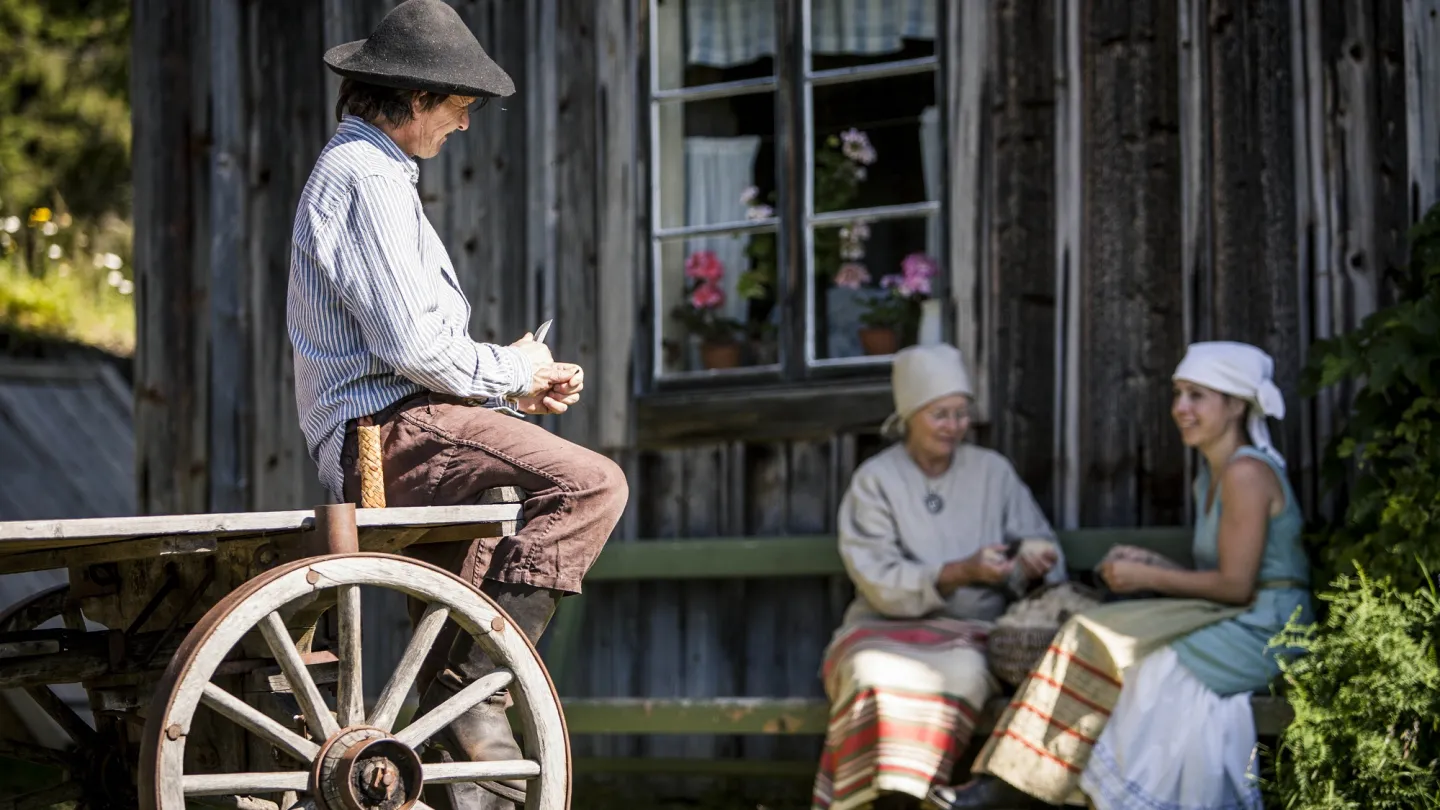
”Hälsingland Farm houses” (e.g. "Hälsingegårdar" in swedish) is a collective name for a rich variety of older and well-preserved farmhouses in Hälsingland, in the 36 different parishes over four centuries.
Hälsingegårdarna have been a World Heritage Site since the summer of 2012 when the World Heritage Committee, at a meeting in St. Petersburg, decided to add them to the World Heritage List. Seven selected farms are listed under the World Heritage for their specific wall paintings and decorations. These seven represent the other Hälsingegårds, which are locally most often called hembygdsgårdar or village bygdegårdar sometimes.
This is the case in Nordanstig, with e.g. Gropgården in Harmånger, Jättendals hembygdsgård, Hazeliusgården in Älgered and Ersk-Matsgården in Hassela. These are classified as good examples of Hälsingegård. Furthermore, we also have our fantastic locale farm homesteads, which in different ways represent the history of Hälsingland. We have a farm homesteads in all six of our parishes in Nordanstig; Bergsjö, Hassela, Ilsbo, Harmånger, Gnarp and Jättendal.
More about Hälsingland Farm Houses
Hälsingland Farm Houses (Hälsingegårdar) is a cultural heritage and an example of Swedish building tradition from Hälsingland's old farming communities. The farms were mostly built between the years 1800-1870 and the Gävleborg County Museum estimates that there are around 1000 Hälsingland farm Houses left. Definition of Hälsingegård: "A farm in Hälsingland whose buildings were mainly built before 1910. Grand residential buildings, often several on each farm, with many windows and painted interiors."
The Hälsingland farmers began to build large and furnish lavish rooms for parties as early as the 17th century. Over time, more and even bigger houses were built, which culminated in the 19th century. Back then, a single farm could have up to fifteen furnished rooms, even though only a couple were used on a daily basis. The rest were only used on really significant occasions in people's lives as where the biggest party was weddings.
The festive rooms are often richly decorated. The painting technique had to mark the use and status of the room - just as the choice of materials did in the manor and city environments where the farmers and painters drew inspiration. To give the noble room a truly festive character, large landscape pictures, urban environments and beautiful flower decorations were often painted directly on the walls.
The farmers in Hälsingland were self-employed and thus could decide on their income, their life and construction. Their good economy was based on agriculture and cattle breeding. In addition to that, many Hälsingland farmers also had the opportunity to earn income from, for example, linen production, trade and the sales of forestry etc.
Source: www.halsingegardar.se



